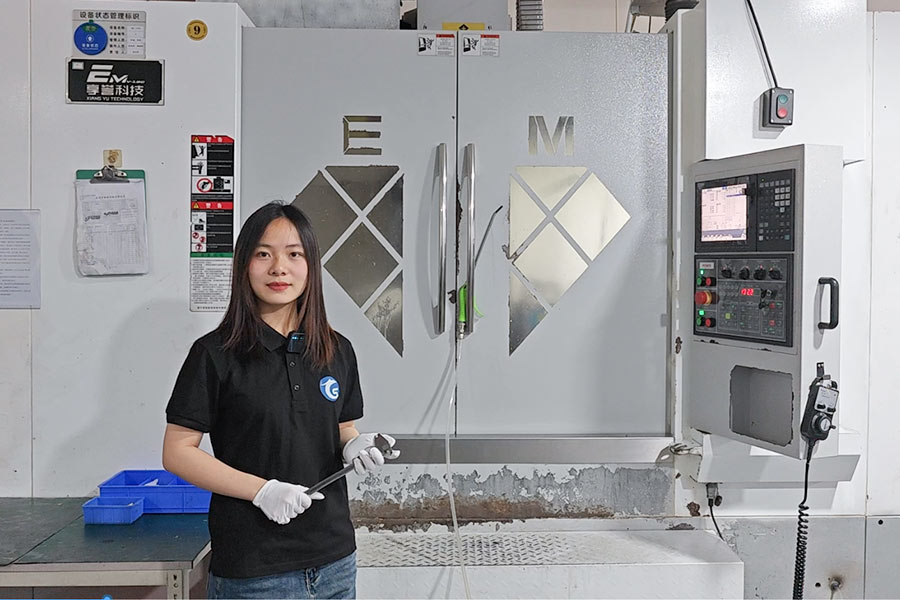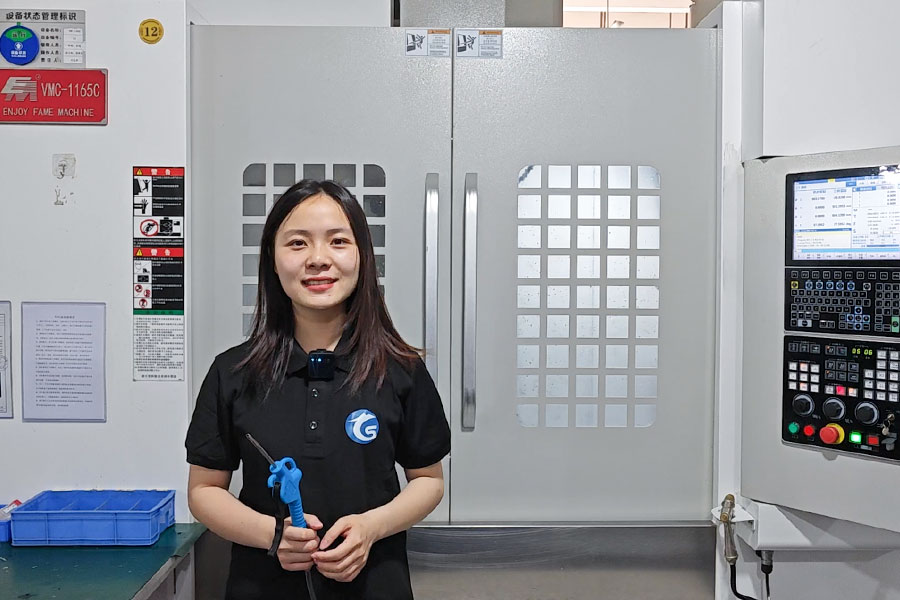CNC milling is a important subtractive manufacturing process within the fashionable manufacturing business, the place a computer-controlled chopping instrument progressively removes materials from a workpiece to create a desired form or object. 3-axis and 4-axis milling are two widespread sorts of CNC machining that differ within the variety of axes and movement capabilities, thus affecting their vary of purposes and machining capabilities. This text will define the principle variations and respective benefits and downsides of each strategies.
3-Axis Milling
3-axis CNC milling is the best and hottest alternative throughout the business, involving the manipulation of the workpiece concurrently alongside three totally different axes (X, Y, and Z). Any such machine is thought for its versatility and the flexibility to provide a wide range of shapes and options. A notable attribute of 3-axis milling is that the workpiece stays stationary whereas the chopping instrument strikes alongside the three axes to mill the half. Though 3-axis CNC milling is sort of exact, there’s a higher risk of random errors as a result of constant repositioning of the workpiece. Moreover, 3-axis milling has limitations in terms of extraordinarily complicated geometries.
4-Axis Milling
Extra superior than 3-axis machining, 4-axis machining includes the X, Y, Z (three linear axes), and a further axis, the A-axis, which is a rotational axis across the X-axis. 4-axis milling permits for steady machining at totally different angles, aiding within the exact manufacturing of complicated parts. 4-axis CNC machining has benefits reminiscent of enhanced performance, improved effectivity, increased precision, and flexibility. Nonetheless, the setup prices for 4-axis CNC machining are increased, it requires expert operators, and it’s nonetheless restricted by geometric constraints.

Most important Variations
The principle distinction between 3-axis and 4-axis milling lies within the variety of axes or planes the machine can transfer and lower. 3-axis milling operates on the X, Y, and Z planes, whereas 4-axis milling provides rotation across the X-axis. This extra axis expands the machine’s machining capabilities, permitting it to work on as much as 4 faces with none particular necessities reminiscent of distinctive fixtures or chopping instruments.
Advantages and Disadvantages
Some great benefits of 3-axis milling embrace a compact construction, excessive area utilization, quick machining velocity, and excessive precision. Nonetheless, its limitations in dealing with complicated geometries can result in decreased effectivity. In distinction, whereas 4-axis milling is extra expensive, it affords increased precision and the flexibility to machine extra complicated parts.
Distinction Between 3-Axis and 4-Axis Milling
3-Axis Milling
Definition and Working Precept
3-axis CNC milling includes the simultaneous manipulation of the chopping instrument alongside three totally different axes: X, Y, and Z. The workpiece stays stationary whereas the chopping instrument strikes linearly in these instructions to mill the half.
Advantages
- Value-Effectiveness: 3-axis CNC milling is usually inexpensive than extra complicated machines.
- Simplicity of Operation: These machines are simpler to deal with and program, making them appropriate for a variety of widespread machining duties .
- Versatility: They’ll machine numerous supplies and are able to creating primary 3D shapes and complex options .
Limitations
- Complicated Shapes: 3-axis machines have limitations in machining extraordinarily complicated geometric shapes .
- Machining Time: The necessity for a number of setups may end up in longer machining instances .

4-Axis Milling
4-axis machining is extra superior than 3-axis machining, involving a further axis (A-axis) that rotates across the X-axis. This permits for steady machining at numerous angles, aiding within the exact manufacturing of complicated parts. 4-axis CNC machining affords enhanced performance, elevated effectivity, increased precision, and flexibility. Nonetheless, it comes with increased setup prices, requires expert operators, and continues to be restricted by sure geometric constraints.
Most important Variations
The first distinction between 3-axis and 4-axis milling lies within the variety of axes the machine can transfer and lower alongside. 3-axis milling operates on the X, Y, and Z planes, whereas 4-axis milling provides rotation across the X-axis. This additional axis expands the machine’s machining capabilities, permitting it to work on as much as 4 sides with out the necessity for particular fixtures or chopping instruments.
Advantages and Disadvantages
3-axis milling is thought for its compact construction, excessive area utilization, quick machining velocity, and excessive precision. Nonetheless, its limitations in dealing with complicated geometries can result in decreased effectivity. In distinction, 4-axis milling, whereas extra expensive, supplies increased precision and the flexibility to machine extra complicated parts.
Comparability Between 3-Axis and 4-Axis Milling
| Function | 3-Axis Milling | 4-Axis Milling |
|---|---|---|
| Variety of Axes and Movement Capabilities | Linear motion alongside X, Y, Z axes | Provides an A axis on the idea of three axes, rotating across the X axis |
| Machining Complexity | Unable to process extraordinarily complicated geometric shapes | Can enhance the precision, high quality, and effectivity of machining free area curvature |
| Variety of Setups | Requires particular fixtures, barely increased manufacturing value, longer setup time | Doesn’t have to reposition the workpiece, reduces the potential of human errors, improves total precision |
| Machining Time | When coping with complicated geometric shapes, the effectivity is decreased, and the machining time is longer | Can work on as much as 4 faces with out the necessity for particular fixtures or chopping instruments, lowering the general machining time |
| Value | Usually cheaper than extra complicated machines | Extra superior know-how, so the fee is of course increased |
| Utility Fields | Appropriate for a lot of widespread machining duties | Extra advantageous when machining designs of upper complexity, not based mostly on the business itself |
Each 3-axis and 4-axis milling have their benefits and limitations. 3-axis milling is cheaper, easy to function, appropriate for a lot of widespread machining duties, however has limitations when machining complicated shapes, and requires a number of setups, inflicting longer machining time. Alternatively, whereas 4-axis milling is extra expensive, it affords increased precision and capabilities, can machine extra complicated parts, and the machining time is shorter. The selection of which milling technique to make use of will depend on the precise necessities of the venture, such because the complexity of the parts, precision necessities, and price range. Understanding these variations is indispensable for making certain one of the best stability between value, time, and high quality within the process.
Why Select LongSheng?
There are a number of causes to decide on LongSheng for CNC milling:
Robust R&D and Manufacturing Capabilities: LongSheng possesses superior machining gear reminiscent of CNC machining facilities and gantry grinding machines, able to producing high-quality merchandise to satisfy buyer wants. Furthermore, LongSheng’s CNC duplex milling machine options hydraulic clamping that completes milling for all 4 sides in a single clamping, thus bettering manufacturing effectivity.
Main Expertise: LongSheng’s R&D and manufacturing workforce consists of over 30 people who possess in depth expertise and technical prowess within the mechanical business.
High quality Merchandise: LongSheng’s CNC milling machine can rapidly mill all 4 sides of a typical mold base, regardless of its measurement, and may substitute grinding. This enhances the product’s precision and floor high quality.
Wonderful Service: LongSheng emphasizes customer support and is ready to present customized options based mostly on buyer wants.
3-axis milling includes three linear axes (X, Y, Z) for the motion of the instrument, whereas 4-axis milling contains a further rotating axis (A or B) for rotating the workpiece. 4-axis milling is appropriate for machining complicated geometries and parts with totally different angular options, which can’t be achieved with 3-axis milling. The fourth axis permits the workpiece to rotate, permitting the machining instrument to succeed in totally different areas with out the necessity to reposition the workpiece.3-axis milling is the best and hottest possibility in business, it permits machining on all 6 faces of a component, however has limitations in terms of creating tilt options or something on the XYZ coordinate system.
For complicated geometrics and parts with totally different angular options, 4-axis milling is beneficial. It’s appropriate for industries reminiscent of automotive, aerospace and Marine, which regularly require strong parts that may in any other case require casting
. If the venture complexity is excessive, the general price range, time and high quality necessities must also be taken into consideration. 3-axis milling is cost-effective, however may end up in increased prices resulting from fixture and process complexity. 4 – and 5-axis milling is extra superior and affords higher efficiency, but additionally comes at the next value.
The development in milling know-how is in the direction of five-axis management, which makes it potential to clamp the workpiece in a single go, obtain high-precision machining of complicated spatial surfaces, and be capable to carry out all of the operations {that a} 3-axis machine can do, reminiscent of drilling, threading holes, chopping key slots, milling down options, and chopping sharp angles. 5-axis machines can create extra complicated 3D geometries, whereas 3-axis is quicker for easier jobs. The perfect milling technique is to stability value, time, and outcomes for a selected venture.
FAQs
What sorts of initiatives are appropriate for 4-axis milling?
4-axis milling is appropriate for initiatives that require complicated geometries and designs, reminiscent of automotive parts, aerospace parts, and complex sculptures. It is also splendid for initiatives that require precision and accuracy, because the 4th axis permits for extra detailed and exact cuts.
Can the 3-axis milling machine be upgraded to 4-axis?
Sure, a 3-axis milling machine may be upgraded to a 4-axis machine. This improve sometimes includes including a rotary desk or a rotary axis, which permits for rotation round one of many current axes. Nonetheless, it is necessary to notice that this improve might contain important prices and modifications to the machine’s operation and upkeep.
Is it exhausting to study 4-axis milling programming?
Studying 4-axis milling programming can certainly be difficult. That is primarily as a result of complexity of the geometries and actions concerned. Nonetheless, with the fitting coaching, follow, and understanding of arithmetic (notably geometry and trigonometry), it’s definitely achievable. Moreover, the usage of software program instruments can enormously assist within the programming process.
What are the standard purposes of 4-axis milling?
4-axis milling is often used for extra complicated machining duties that require a further diploma of freedom in comparison with 3-axis milling. It’s notably helpful for machining complicated geometries and parts which have options at numerous angles. The 4th axis permits the workpiece to rotate, enabling the machining instrument to succeed in totally different areas while not having to reposition the workpiece. This makes 4-axis milling appropriate for purposes in industries reminiscent of vehicle, aerospace, and boating, the place complicated parts which are stable and would in any other case must be forged are generally required. Moreover, 4-axis milling can carry out all of the operations {that a} 3-axis machine can, reminiscent of drilling, threading holes, chopping key slots, milling undercut options, and chopping sharp angles.
What’s the value distinction between the 2 approaches?
The price distinction between upgrading a 3-axis milling machine to a 4-axis machine and buying a brand new 4-axis machine can differ enormously relying on a number of elements.
Elements Affecting the Value Distinction
Situation of the Current Machine: If the prevailing 3-axis machine is in good situation, the price of upgrading could be lower than buying a brand new 4-axis machine. Nonetheless, if the machine is outdated or requires important repairs, the price of upgrading might be increased.
Value of the Improve Package: The worth of the improve equipment may also considerably influence the fee distinction. If the improve equipment is dear, it could be cheaper to buy a brand new 4-axis machine.
Further Prices: Different prices related to the improve, reminiscent of new software program, coaching for operators, and potential downtime throughout the improve process, must also be thought of. These prices can add up and may make buying a brand new machine extra economical.


